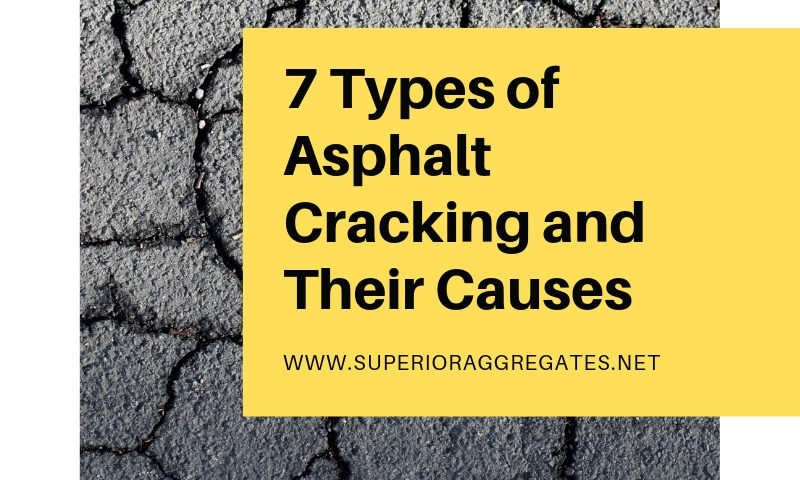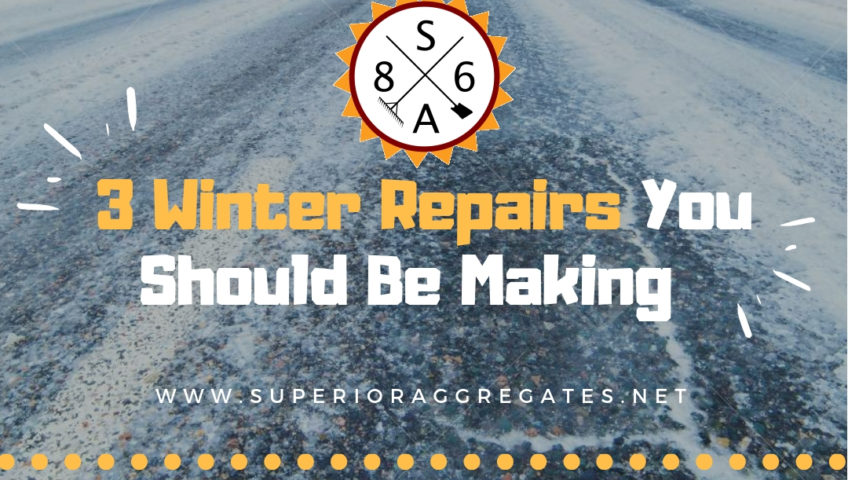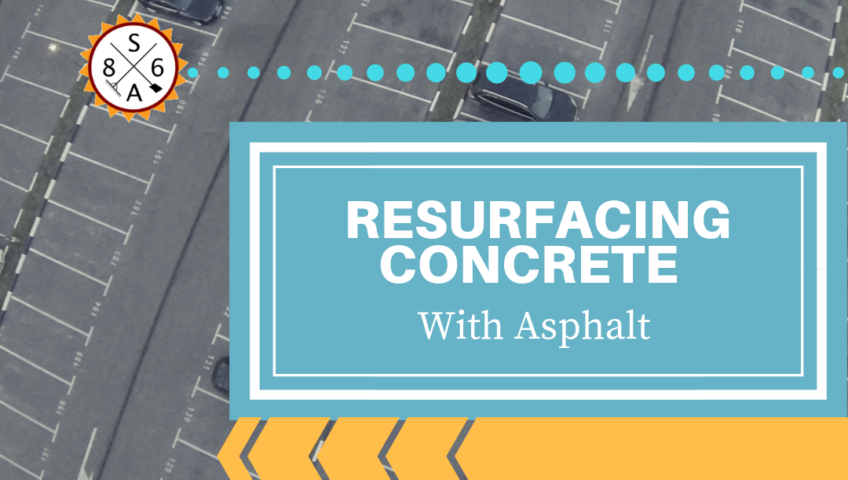
7 Types of Asphalt Cracking and Their Causes
There are numerous causes of asphalt cracking. These include harsh weather or climate conditions, drainage problems, incorrect or poor quality materials, and traffic loads. Proper identification of crack type and cause is vital. Each type of crack has distinct causes. Timely maintenance is critical to keep asphalt conditions from deteriorating further. Here are 7 types of asphalt cracking, the major reasons why the cracks occur, and the possible fixes for each.
1. Edge cracking
Edge cracks are longitudinal cracks within a few feet of one of the edges of the pavement. They can be caused by settlement of the underlying material, soil drying, or lack of lateral support. Possible contributors can be nearby trees or shrubs. These should be cleared away. Filling with asphalt emulsion slurry will often take care of this problem. Drainage may need improvement.
2. Slippage cracking
These cracks are crescent shaped. A number of factors can lead to slippage cracks. Non-adhesive materials, such as water or dirt between layers, can lead to poor bonding between the surface and material beneath. Low-strength or deficient asphalt mix is one possible factor. Usually the solution is to remove material around the crack until a layer with good bonding is reached. The upper area can then be patched.
3. Reflection cracking
Reflection cracking happens because of asphalt pavement overlays that have been placed over a pavement structure that has been cracked or jointed. There is then shifting or movement of the old pavement. These cracks or joints can reflect from that pavement to the surface. Crack sealant can sometimes fix low severity cracks. Pavement that is cracked more severely may need the layer replaced.
4. Transverse cracking
Cracks approximately perpendicular to the centerline are commonly known as transverse cracks. Transverse cracking may occur due to low temperature thermal cracking or because the asphalt grade is too hard for the particular climate conditions. These cracks are often caused by asphalt layer shrinkage. They are not load related but can be aggravated by heavy traffic. Generally, repairing this type crack calls for sealant or, if necessary, replacement with a new overlay.
5. Fatigue cracking
Fatigue cracks are sometimes called alligator cracking because they favor the skin of these reptiles. As the name fatigue cracking suggests, this deterioration is load related. It can be aggravated by deterioration of a weak base, subgrade, or surface. Poor drainage can be a factor. The distressed area material must be removed and replaced with the correct asphalt mix.
6. Block cracking
Block cracks resemble giant rectangles or squares in your pavement. Lack of sufficient moisture in the original application, or later on, is one possible cause. Extreme temperature cycles can cause an inability of the asphalt binder to contract or expand sufficiently as well. Traffic is not usually a factor. Small cracks can be sealed. Overlay replacement is the usual remedy for more severe block cracking.
7. Longitudinal cracking
Longitudinal cracks run paralleled to the pavement centerline. A number of factors could cause longitudinal cracking. There can be shrinkage of the asphalt. A joint could have been constructed poorly. Improper paver operation can be a cause. The surface in these cases will need to be resealed with proper adjustments made.
Asphalt crack repair is important. As you can see from the many causes for asphalt cracks, it is vital to identify the problem correctly. Untreated cracks get larger and can lead to potholes. Once the problem is identified, the appropriate remedy or fix can usually quickly and safely bring the asphalt back to its proper function.
There are numerous causes of asphalt cracking. These include harsh weather or climate conditions, drainage problems, incorrect or poor quality materials, and traffic loads. Proper identification of crack type and cause is vital. Each type of crack has distinct causes. Timely maintenance is critical to keep asphalt conditions from deteriorating further. Here are 7 types of asphalt cracking, the major reasons why the cracks occur, and the possible fixes for each.
1. Edge cracking
Edge cracks are longitudinal cracks within a few feet of one of the edges of the pavement. They can be caused by settlement of the underlying material, soil drying, or lack of lateral support. Possible contributors can be nearby trees or shrubs. These should be cleared away. Filling with asphalt emulsion slurry will often take care of this problem. Drainage may need improvement.
2. Slippage cracking
These cracks are crescent shaped. A number of factors can lead to slippage cracks. Non-adhesive materials, such as water or dirt between layers, can lead to poor bonding between the surface and material beneath. Low-strength or deficient asphalt mix is one possible factor. Usually the solution is to remove material around the crack until a layer with good bonding is reached. The upper area can then be patched.
3. Reflection cracking
Reflection cracking happens because of asphalt pavement overlays that have been placed over a pavement structure that has been cracked or jointed. There is then shifting or movement of the old pavement. These cracks or joints can reflect from that pavement to the surface. Crack sealant can sometimes fix low severity cracks. Pavement that is cracked more severely may need the layer replaced.
4. Transverse cracking
Cracks approximately perpendicular to the centerline are commonly known as transverse cracks. Transverse cracking may occur due to low temperature thermal cracking or because the asphalt grade is too hard for the particular climate conditions. These cracks are often caused by asphalt layer shrinkage. They are not load related but can be aggravated by heavy traffic. Generally, repairing this type crack calls for sealant or, if necessary, replacement with a new overlay.
5. Fatigue cracking
Fatigue cracks are sometimes called alligator cracking because they favor the skin of these reptiles. As the name fatigue cracking suggests, this deterioration is load related. It can be aggravated by deterioration of a weak base, subgrade, or surface. Poor drainage can be a factor. The distressed area material must be removed and replaced with the correct asphalt mix.
6. Block cracking
Block cracks resemble giant rectangles or squares in your pavement. Lack of sufficient moisture in the original application, or later on, is one possible cause. Extreme temperature cycles can cause an inability of the asphalt binder to contract or expand sufficiently as well. Traffic is not usually a factor. Small cracks can be sealed. Overlay replacement is the usual remedy for more severe block cracking.
7. Longitudinal cracking
Longitudinal cracks run paralleled to the pavement centerline. A number of factors could cause longitudinal cracking. There can be shrinkage of the asphalt. A joint could have been constructed poorly. Improper paver operation can be a cause. The surface in these cases will need to be resealed with proper adjustments made.
Asphalt crack repair is important. As you can see from the many causes for asphalt cracks, it is vital to identify the problem correctly. Untreated cracks get larger and can lead to potholes. Once the problem is identified, the appropriate remedy or fix can usually quickly and safely bring the asphalt back to its proper function.




